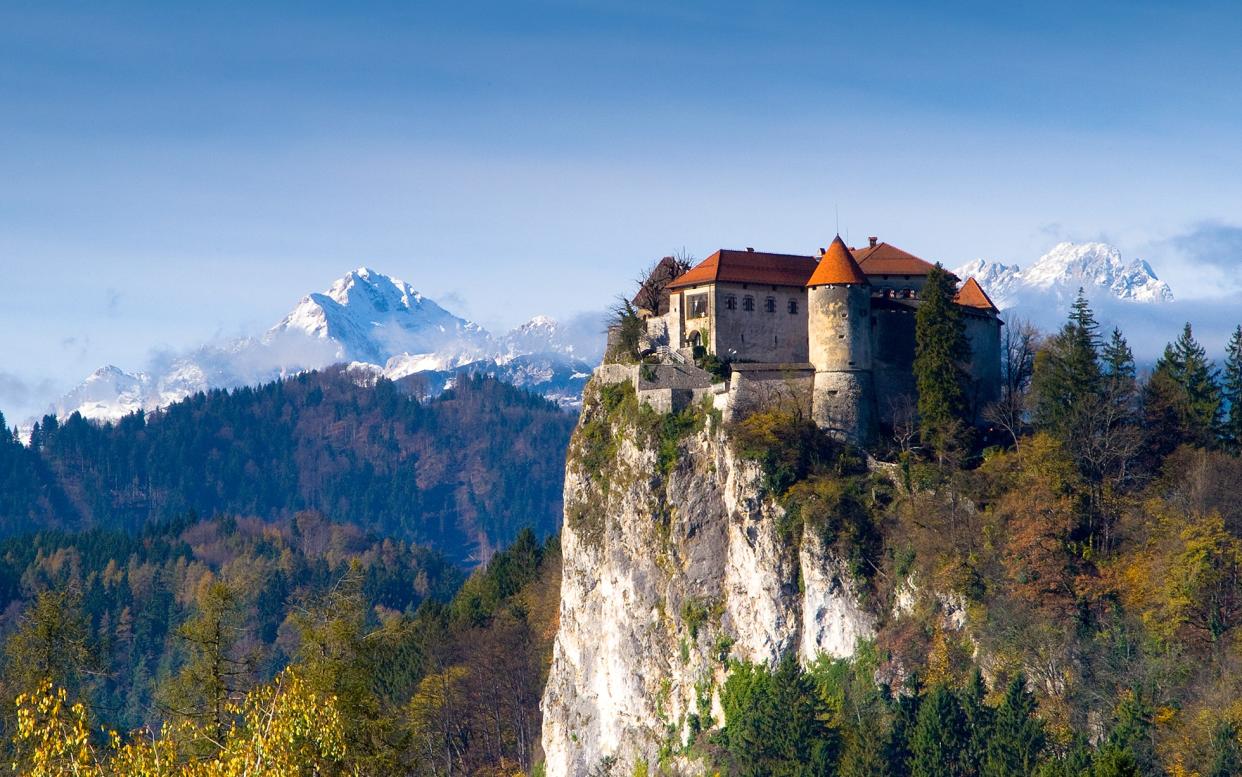Take a quirky, memorable trip to Slovenia

See for yourself why Slovenia is leading the way in eco-travel, with api-tourism just one of the many draws for visitors in a country awash with geological wonders and natural beauty.
Green. Active. Healthy. That is the mantra which makes Slovenia a world leader in eco-travel.
From astonishing bee-conservation initiatives to a unique hop-growing valley, from rare species of “baby dragons” in underground pools to fairytale castles built in caves, this is a country that earns its accolades for sustainable tourism by enthusiastically sharing its eco-passions, quirky natural wonders and distinctive landscapes.
With a picturesque Mediterranean coastline as well as verdant alpine peaks and plateaux, Slovenia is a country of geographical contrasts just waiting to be discovered.
Slovenia is a leading destination for those who care about the humble bumble bee
Slovenia is literally abuzz with api-culture with more than 9,600 beekeepers, 12,500 apiaries and 170,000 hive colonies producing wildflower-fragrant honey.
With more than one apiary for every 166 Slovenes, it’s hard to conjure even an approximate number for the actual population of the indigenous Carniolan honey bee.
As one-third of the human food chain depends on pollination, bee conservation is a global concern – and Slovenia is a leading destination for those who care about the humble bumble bee.
Api-tourism is taking off. The Slovenian Beekeepers’ Association has teamed up with tour operators to offer ApiRoute trips, including honey massage treatments, wellness treatments, tours of apiaries and tasting days.

Slovenia’s initiative in getting the United Nations to declare 20 May World Honeybee Day remains in full swing. The aim is to promote the vital role of bees, exchange conservation visions and spread general “api-ness”.
Below bee level, Slovenia’s caves are geological wonders. In the Inner Carnolia, you find two of the most spectacular examples: the Postojna Cave and the Skocjan cave system.
Postojna is a 24km underground channel carved by the Pivka river. Just over 5km is open for public viewing from a miniature railway that runs you through halls and hollows, past stalactites, stalagmites, sculpted rock forms and deep pools in which the proteus olm, a curious troglodytic aquatic salamander – or “baby dragon” – lives in complete darkness.
Castles in Slovenia are straight from the book of myths and legends
The labyrinthine Skocjan system of limestone caves merits a Unesco World Heritage Site listing. Its existence has been recorded since antiquity, but the caverns are still being explored.
Formed by the River Reka as it flows from its source in Croatia, the water disappears beneath a rocky wall at Velika Dolina, below the village of Skocjan, and burrows underground for 34km before resurfacing at Monfalcone.
At certain points along its subterranean passage, the river has carved out immense, cathedral-like chambers, some more than 140m tall. The two-hour walking tour is a must, taking you along tunnels, through chambers full of exotic dripstones and across the Cerkevnik suspension bridge.

Castles in Slovenia are straight from the book of myths and legends. Bled Castle hangs high over the lake in north-west Slovenia, where it overlooks a picturesque islet on which stands a baroque church dedicated to the Assumption of Mary.
Midway between the capital Ljubljana and the coast, Predjama Castle is a forbidding defensive castle framed by the mouth of a giant cave.
Two castles pre-date the current fortress, one of which was home to Erazem Lueger, a renowned robber baron of the 15th century.
The rogue met his death when a servant raised a flag to signal Erazem was visiting the outhouse, prompting a cannon shot which blasted him from his “throne”.
The Green Gold Fountain jets out a selection of local beers to be drunk from glass tankards
Meanwhile you can stay at Otočec Castle on the Krka River, which has been converted into a hotel offering a fairytale accommodation and dining experience.
If you visit the Old Castle Celje, do stop off at Zalec, a small town in the Lower Savinja Valley, the so-called “Valley of Green Gold”, which is the fifth-largest hop-growing area in the world.
In homage to the town’s brewing traditions, Zalec last year unveiled a quirky fountain in a municipal park close to the marketplace.

Here, instead of water, the Green Gold Fountain jets out a selection of local beers to be drunk from glass tankards. Kukec, the local brew, uses natural thermal water from nearly spa town of Lasko. As you can imagine, people have been flocking here like bees to a honeypot.
And if you have room for another brew or two, you could always visit the beer festival Lasko Pivo (13-16 July), just 20km away at Cvetje.
Beautiful Slovenia
Slovenia is a land of natural beauty, its mountains, lakes and thermal springs inviting superb outdoor activities.
It is also a country where a friendly welcome, unsurpassed hospitality and gastronomic treats await.
To find out more and to plan your trip, see slovenia.info

 Yahoo News
Yahoo News 